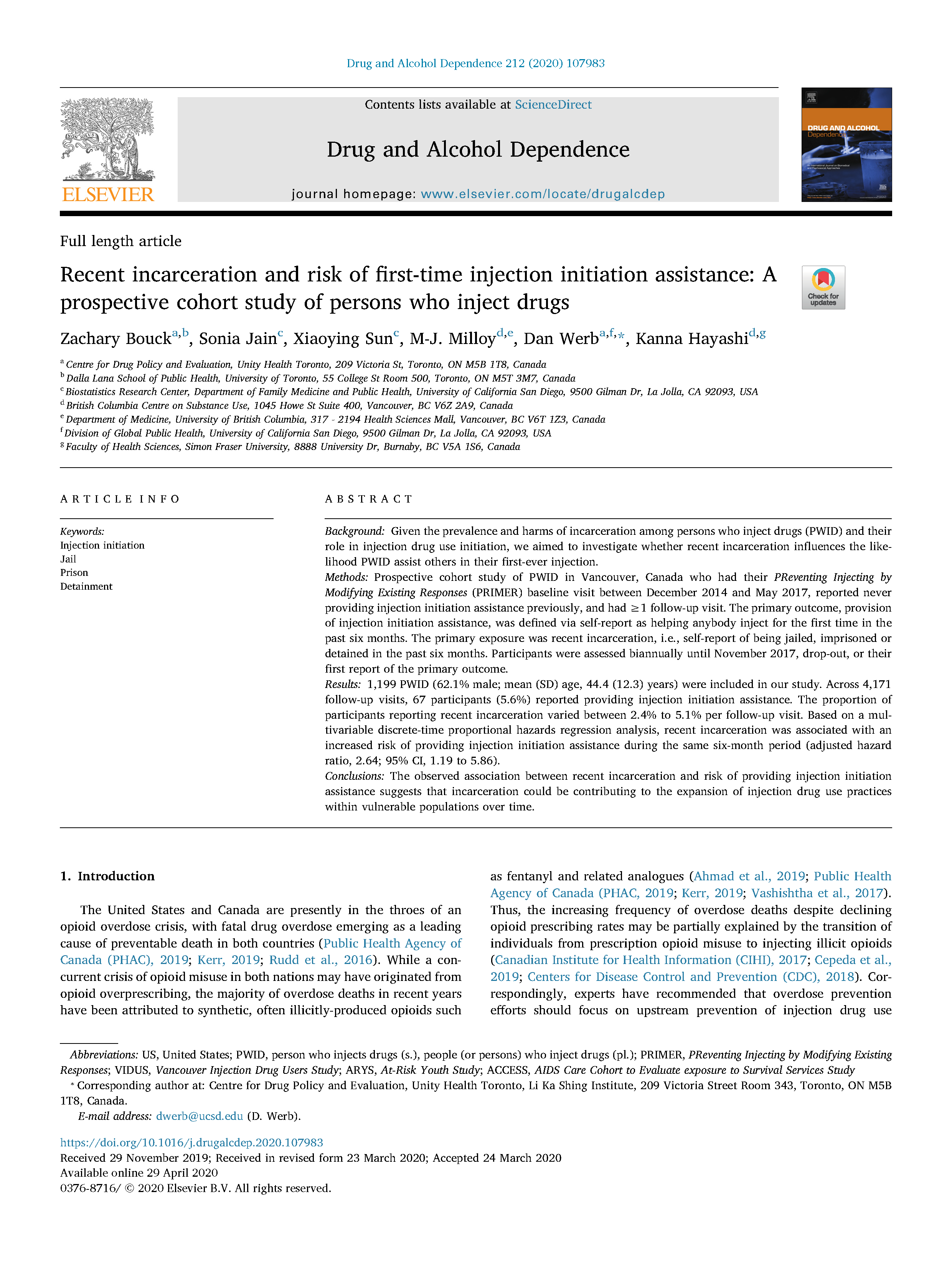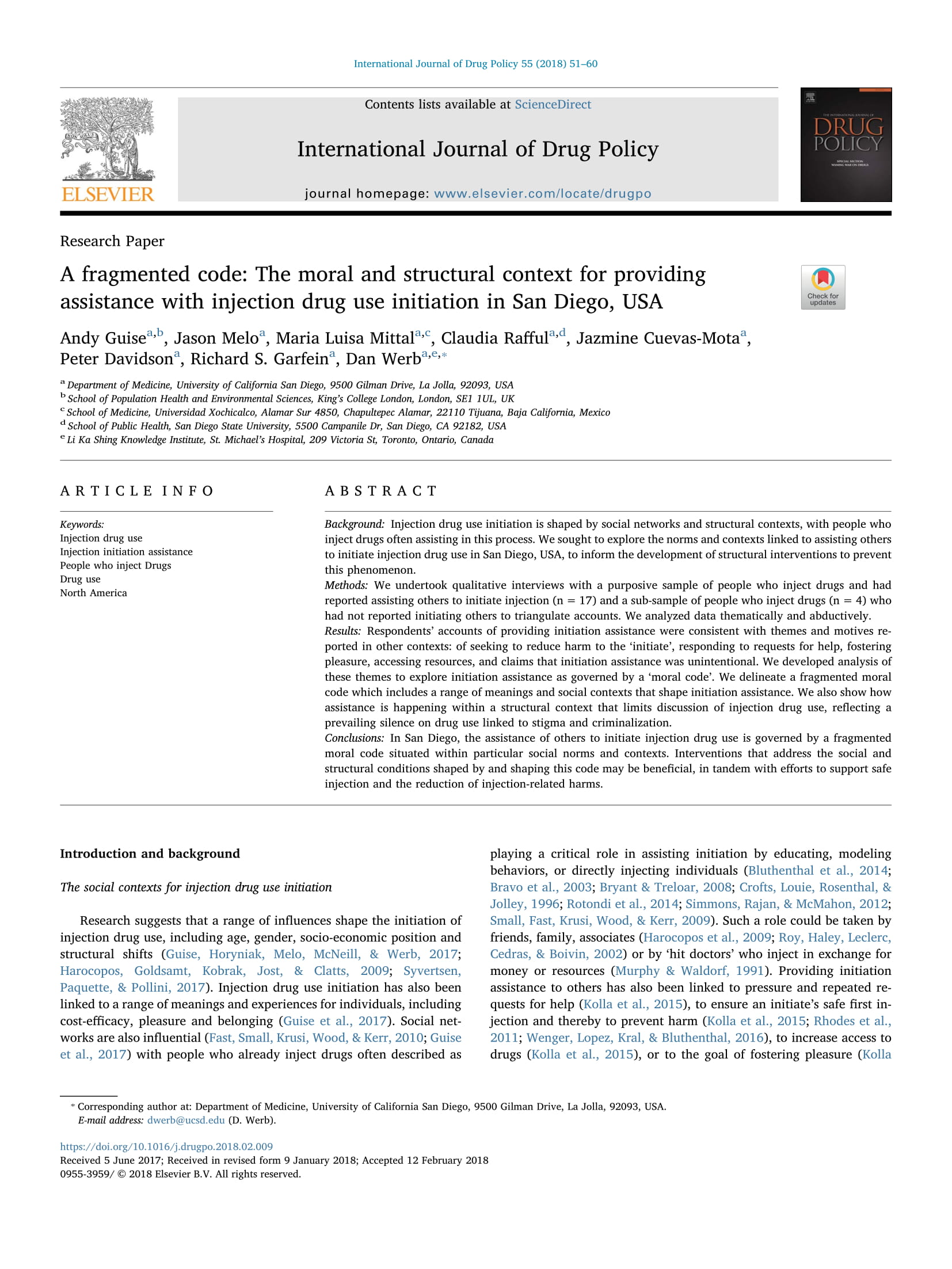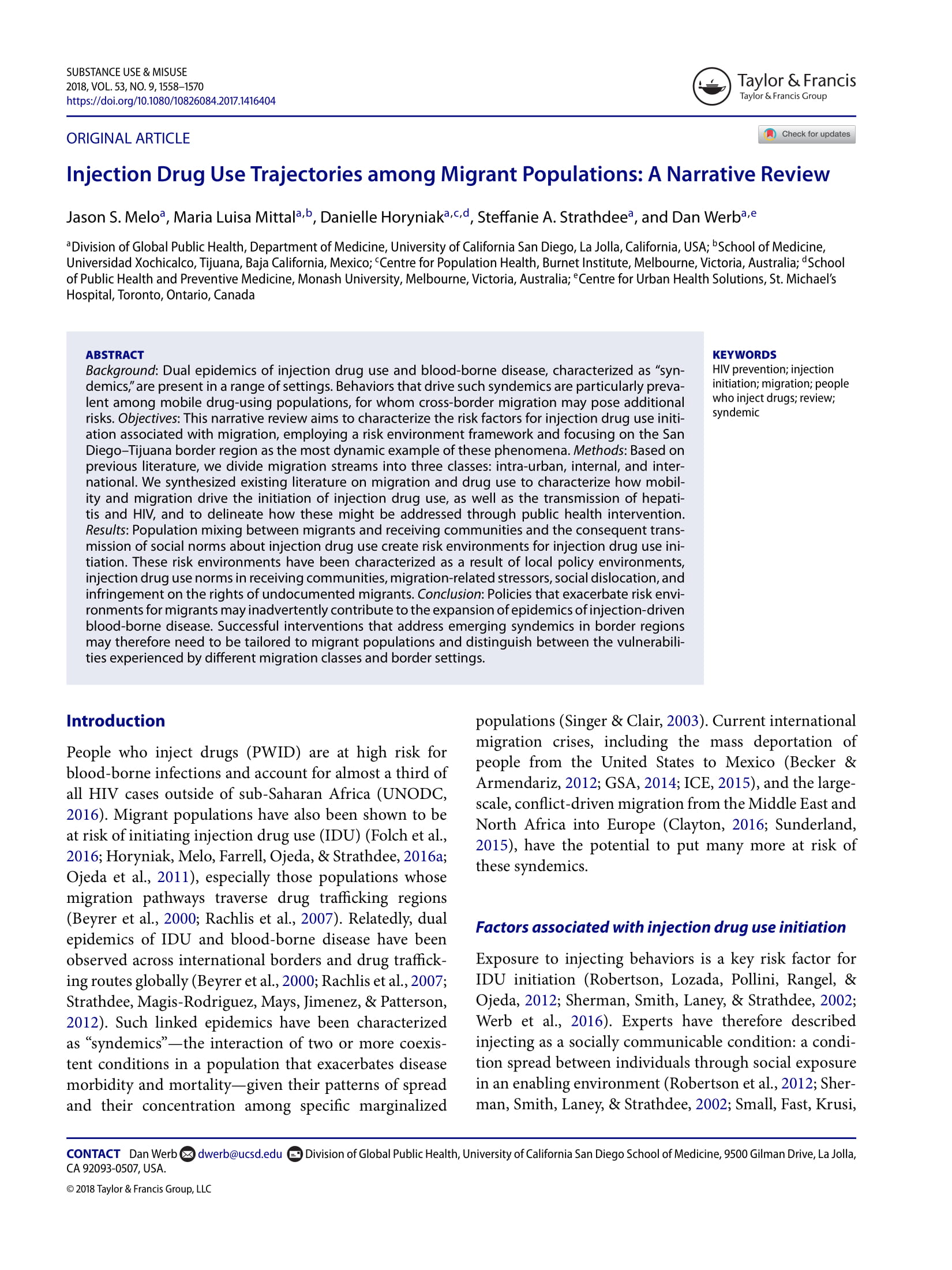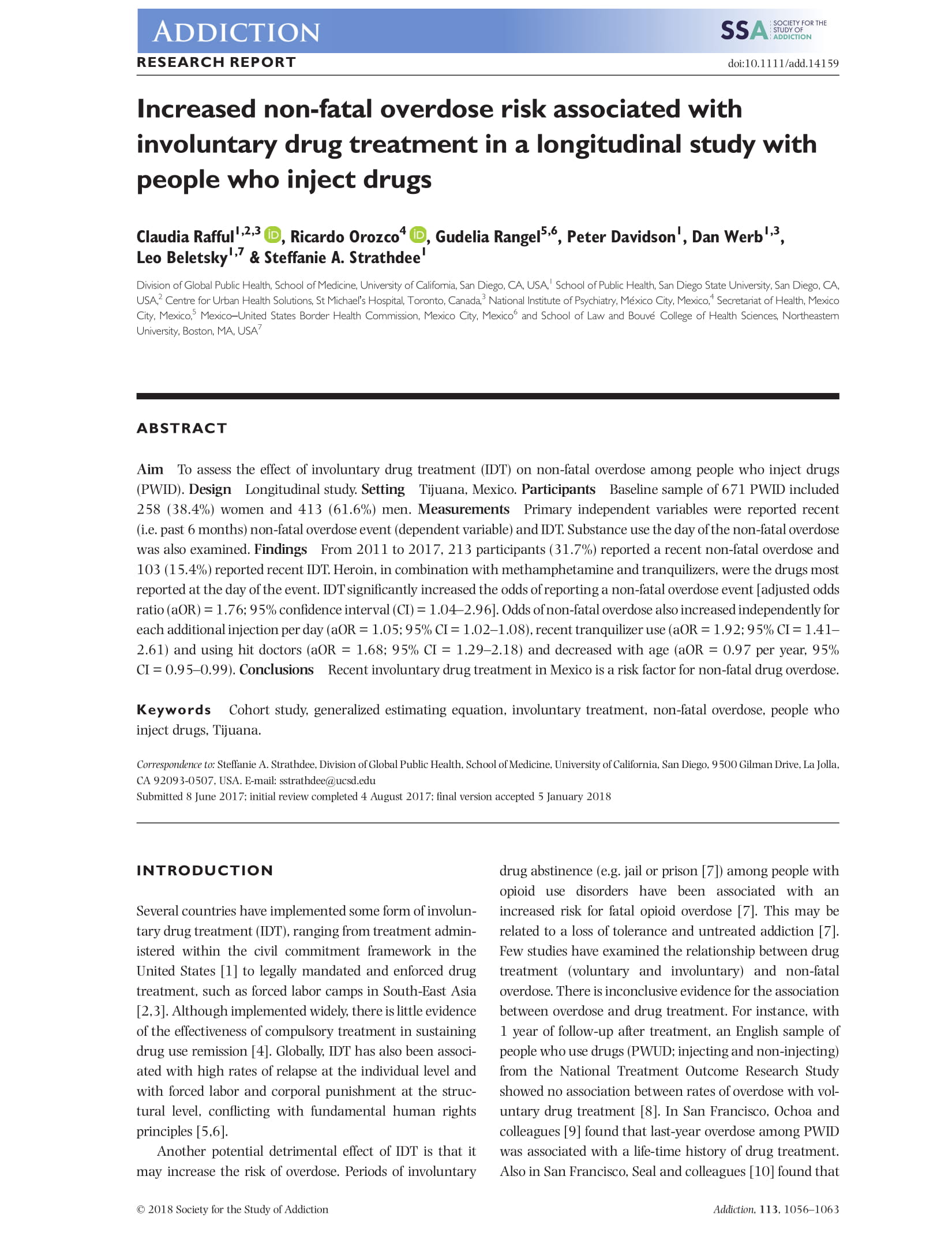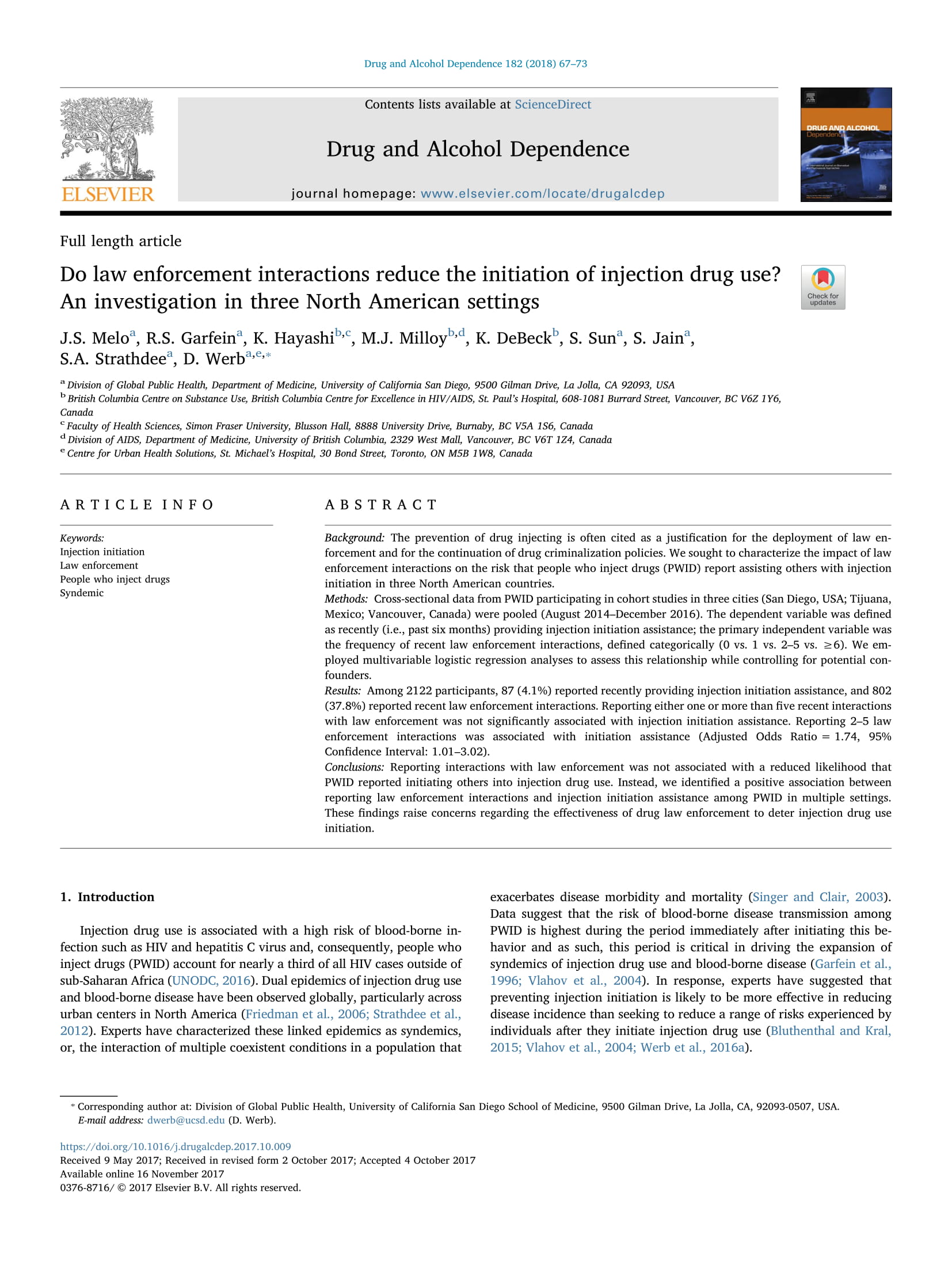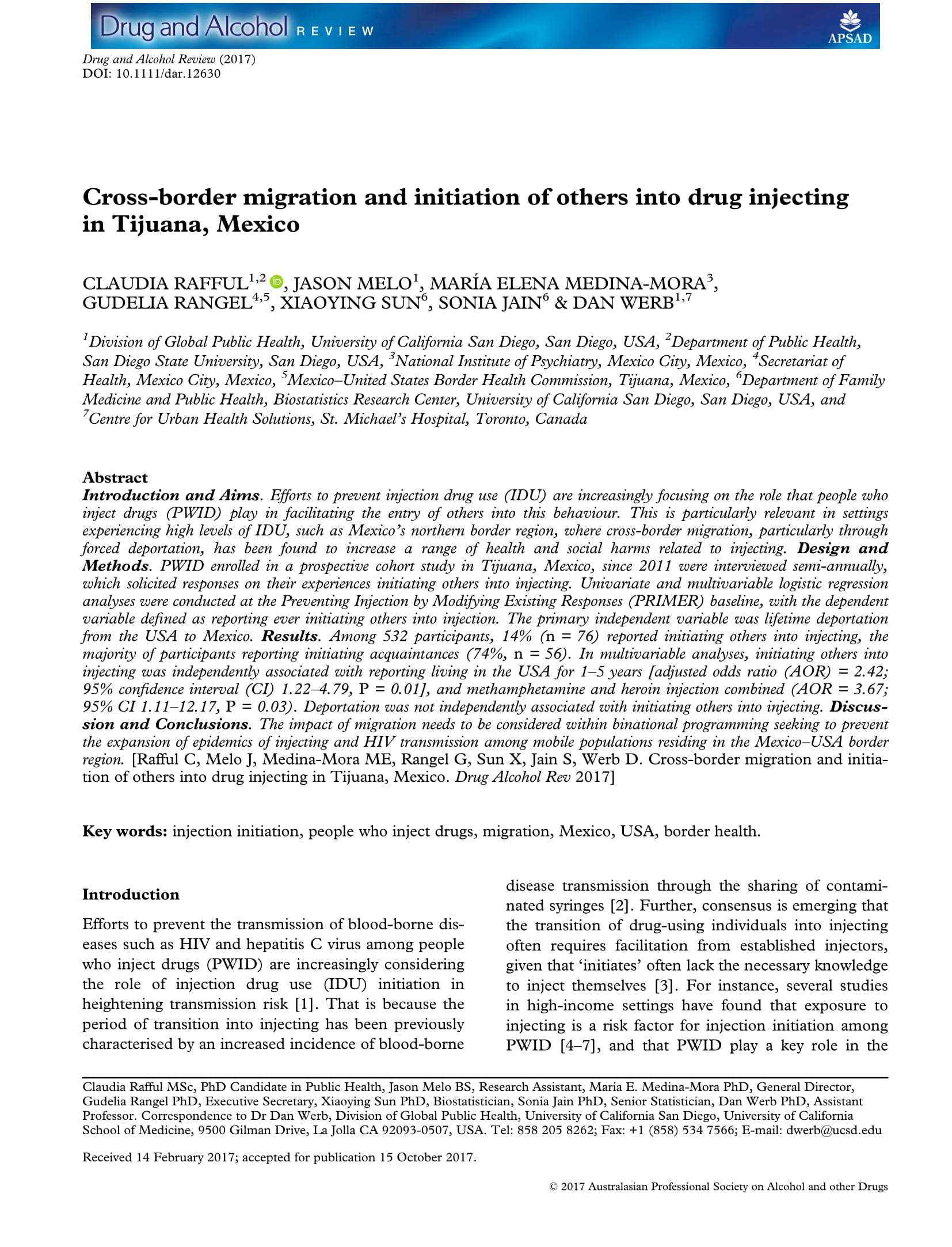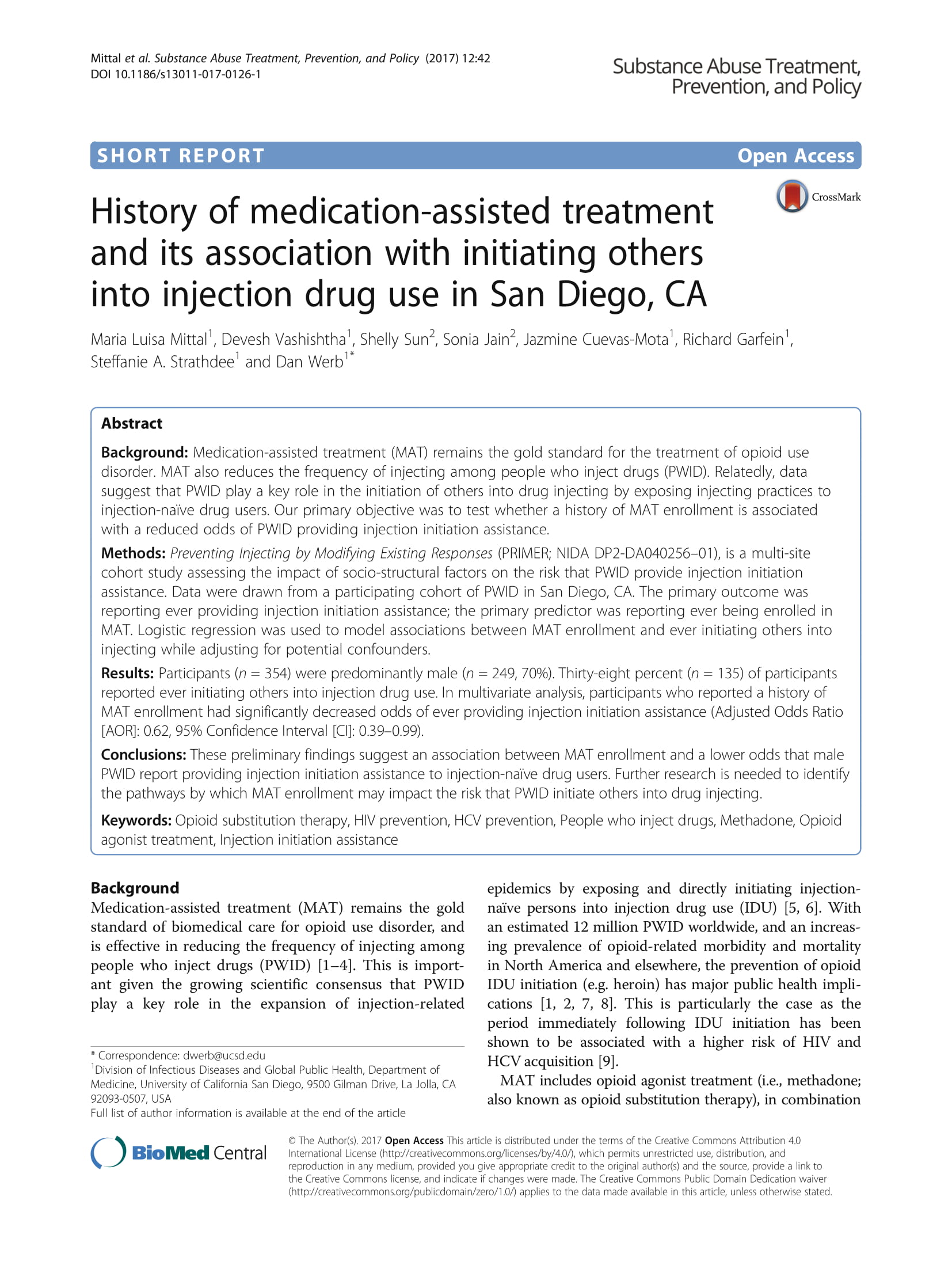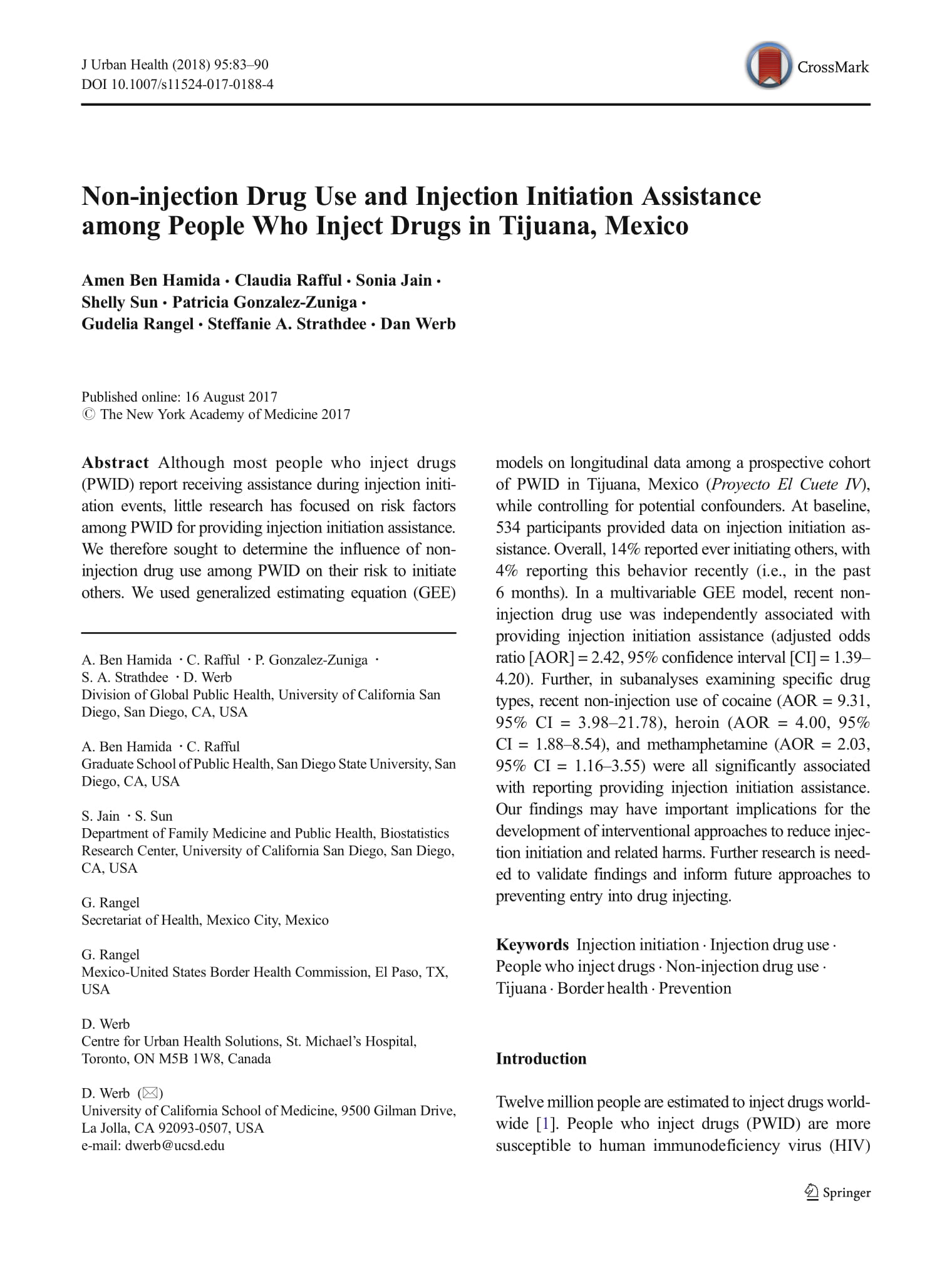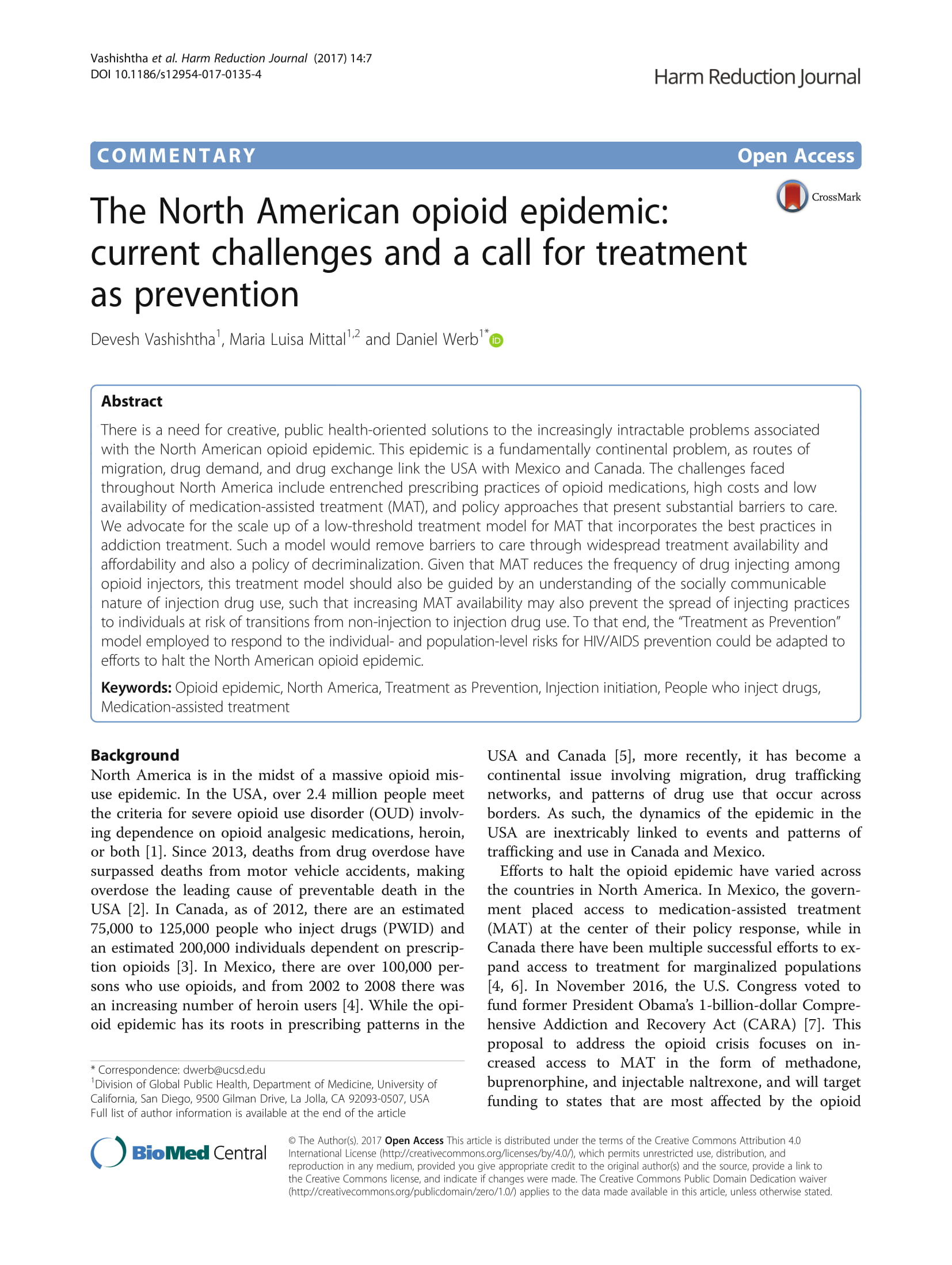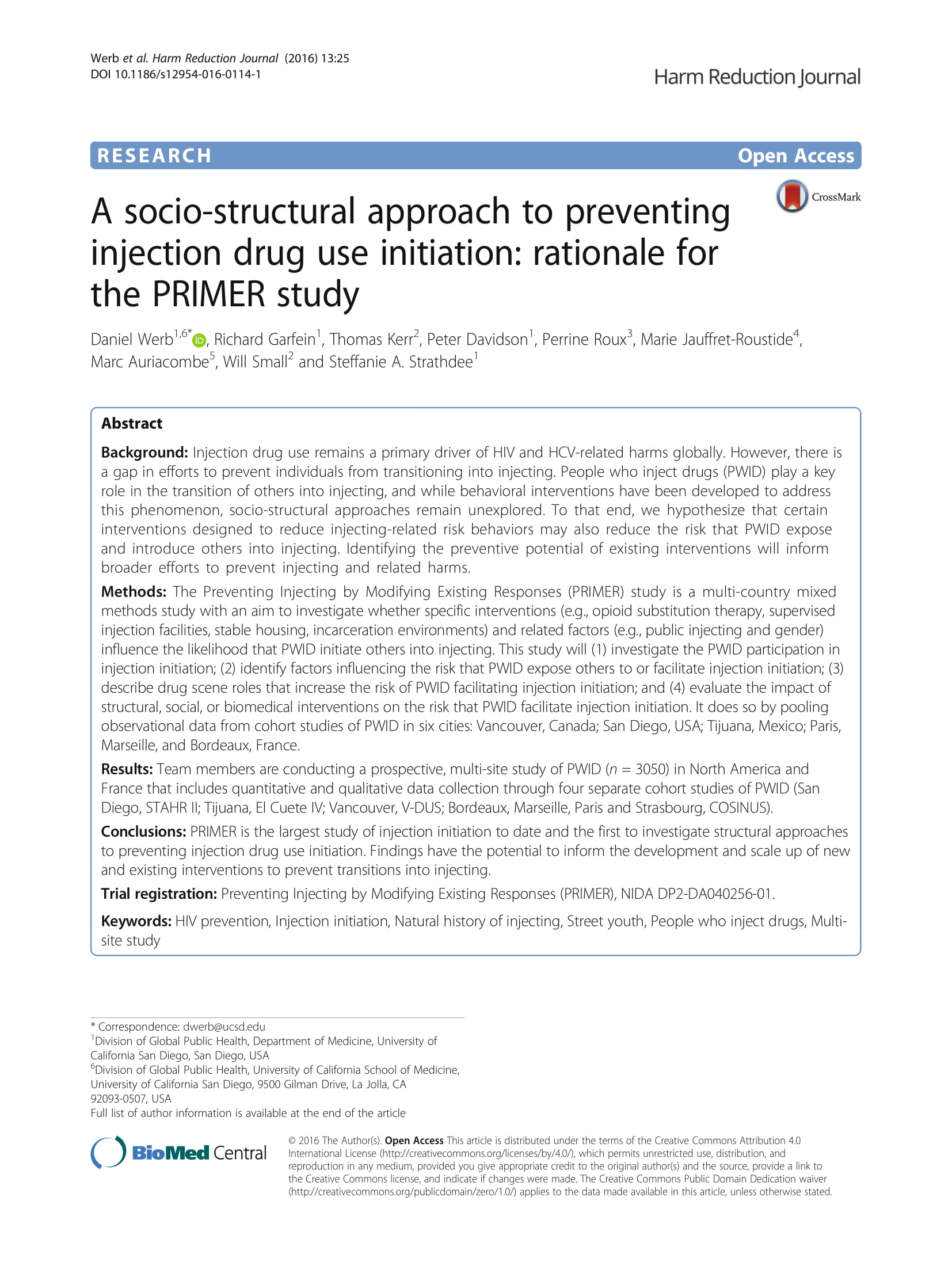Examining the gender composition of drug injecting initiation events: A mixed methods investigation of three North American contexts
Abstract
Background: Gender influences the health and social risks faced by individuals initiating drug injecting. Using mixed methods across three settings in North America, we investigated the gender composition of injection initiation events and the gendered risk environments in which they occurred.
Methods: The PReventing Injecting by Modifying Existing Responses (PRIMER) study pooled data from three prospective community-recruited cohorts of people who inject drugs (PWID) in San Diego, USA, Vancouver, Canada, and Tijuana, Mexico. A qualitative subsample provided narrative data on their experiences of, and the contexts for, injection initiation events. Guided by Rhodes’ risk environment framework, we examined the gender composition of initiation events stratified by city, and analyzed qualitative data using abductive thematic analyses.
Results: Among 2,622 PWID (Tijuana: n = 531; San Diego: n = 352; Vancouver: n = 1,739), 112 (4.3%) reported providing initiation assistance to injection-naïve individuals in the previous six months. The proportion of gender concordant (e.g., male-male) initiation pairs varied, (χ2 = 10.32, p <0.001) with greater than expected concordance among pairs in Tijuana compared with those in Vancouver or San Diego. Sixty-one interviews provided context for the discrepancy across sites by highlighting the gendered injection initiation risk environments of prison/jail detention in Tijuana, intimate partnerships in San Diego, and overdose risk in Vancouver.
Conclusions: These results highlight how gender influences injection initiation events within spatial, social, and economic risk environments, and how this influence varies across settings. These findings can inform interventions to reduce the risk of injection initiation and related harms.
View full article here.



